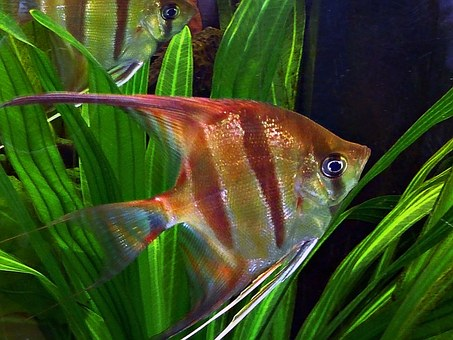
Whether it’s your home or commercial space, installing an aquarium is one of the wisest decisions you can make. Especially when keeping ornamental fish, a fish tank can tremendously uplift the aesthetics of your space. Keeping pet fish is also a physically and emotionally rewarding activity that can make your life more meaningful.
When starting a fish tank, however, maintenance is one of the things that worry if not scare people away. The good thing is that the required level of maintenance will all depend on how you set up the aquarium in the first place. With this being said, here is a brief guide you can follow when setting up a low-maintenance aquarium.
1. What Type of Fish Are You Rearing?
The type of fish you want to raise is the most important factor in deciding what style of the aquarium to build. There are many different varieties of fish, and your preferred choice will define the specifications of your aquarium. As anyone would expect, the fish type will determine the level of aquarium maintenance needed. Before deciding on which fish to keep in an aquarium, do your homework to figure out how large the fish grows, what it eats, how much it eats, and how often you will need to clean the tank. Also, pay attention to the optimal conditions needed, including, temperature, pH, and so forth.
2. Invest In an Easy-To-Clean Aquarium
Many different types of aquariums exist on the market. They vary in terms of design, size, features, and much more. Some come with features such as bacterial filters and aquatic plants that help reduce nitrates and other pollutants to maintain good water quality. With an easy clean fish tank, the time and effort spent on cleaning the aquarium can be tremendously reduced. These self-cleaning tanks also make fish keeping easier and more enjoyable. When picking a self-cleaning fish tank, some factors to look at may include:
- Easy to set up and use
- Reasonable pricing
- Can accommodate growing vegetables
- A range of designs and sizes to choose from
- Can be customized to meet your needs
3. Choose Your Aquarium Plants Carefully
When chosen wisely, plants can offer numerous advantages to a fish tank. As earlier mentioned, some act as natural filters to rid potentially harmful substances from the aquarium water. They also help your fish by absorbing carbon dioxide and supplying oxygen. Nonetheless, just like fish, plants may also require their own care and attention. When setting up a low-maintenance aquarium, you don’t want to spend a lot of effort, time, and money in keeping your aquarium plants well maintained. It is best to introduce low-maintenance aquarium plants sparingly. If you can, only grow the ones that add value to the fish tank.

4. Appropriate Tank Sizing
Some fish grow too big, whereas others breed and multiply quickly. If the biomass is too big for your tank, maintenance becomes rather too demanding. Normally, larger fish tanks are easier to maintain compared to smaller ones. To add to this, the level of maintenance will also depend on whether or not the tank is divided into compartments for different species. All the same, to reduce maintenance, you have to get the aquarium size right for the type and number of fish you intend to keep.
5. Ensure the Water Filter Is Topnotch
Filtration is crucial if you want to have a low-maintenance aquarium. This is why you should get a water filter that can handle the tank’s size as well as the fish population. When choosing a fish tank filter, a larger option than your tank’s capacity helps you to filter more water, giving you more flexibility in your maintenance schedule. Make sure the filter isn’t too big; otherwise, your fish will be pushed around.
6. What to Do About Algae
Finally, algae growth is not uncommon in aquariums. The more algae you have in your aquarium, the more maintenance you’ll have to do. With this in mind, one of the most important aspects to consider when setting up an aquarium is figuring out how to deal with the algae. To begin with, keeping the aquarium away from direct sunlight helps minimize if not prevent algae growth. Also, a variety of algae feeders exist, including certain fish. If your fish species feed on algae, you’re in luck. If not, you can add it, but make sure it will coexist with the ones you already have. Snails, on the other hand, can assist you, but take caution when selecting sexes so they don’t end up colonizing your entire aquarium.
And there you pretty much have it. Keeping an aquarium doesn’t have to be an extremely tough job. With the few tips above, you will hopefully rear healthy and happy fish in an appealing aquarium without stress and fatigue.
